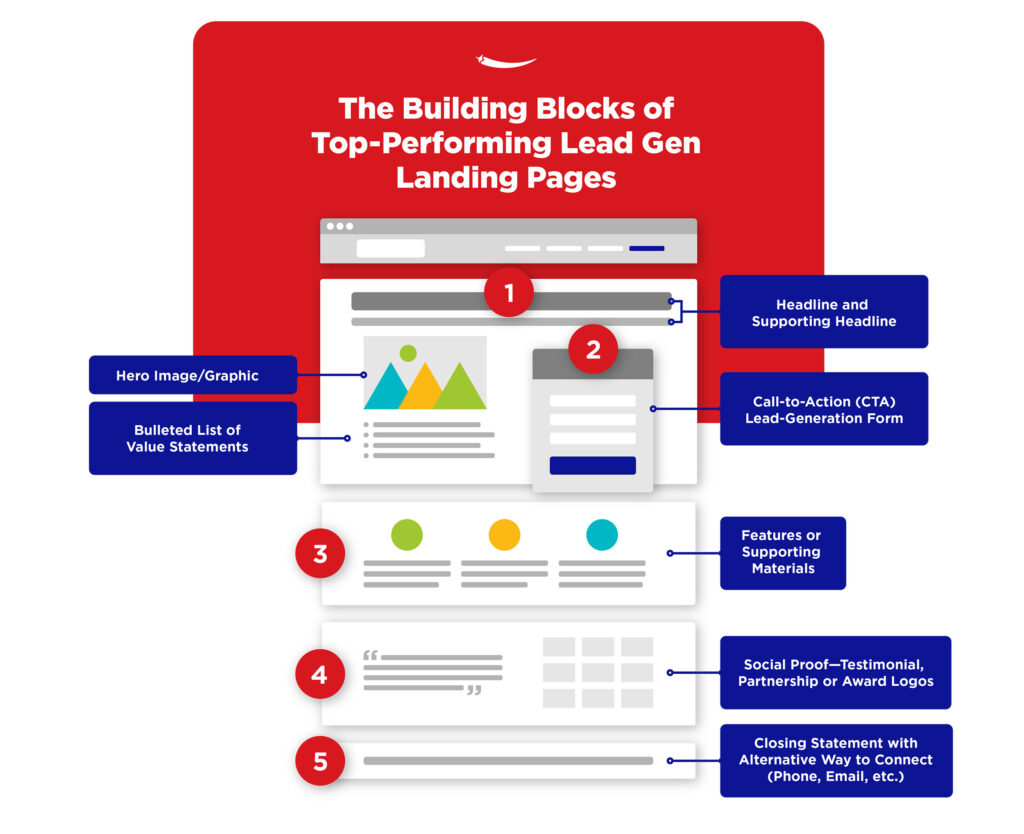MarTech Moment: Optimizing B2B Landing Pages for Lead Generation
Landing pages are a crucial component of any marketing campaign. They serve as dedicated entry points that focus on converting visitors into self-identifying leads or customers. Unlike general website pages, landing pages are designed with a single objective in mind, such as capturing email addresses, promoting/selling a product/service or encouraging event registrations. This focused approach helps streamline the user journey and increases the likelihood of achieving the campaign's goals. Additionally, landing pages can enhance SEO efforts, improve paid search (SEM) effectiveness and deliver measurable data on the customer journey, preference, and user experience (UX) to refine marketing strategies.
Key Performance Indicators (KPIs) to Measure Success
- Conversion Rate: The primary metric used to measure the success of a landing page. It represents the percentage of visitors who complete the desired action.
- Bounce Rate: A high bounce rate, measured as a percentage, indicates that visitors are leaving the page (typically defined as within 10 seconds by Google's GA4) without engaging further or navigating to other pages on the site. A bounce rate exceeding 50% suggests potential issues with design, content or audience targeting that may need improvement.
- Average Time on Page: Similar to bounce rate, this metric measures the duration visitors stay on the page, indicating their level of interest and engagement.
- Referring Traffic: Understanding where your visitors are coming from (e.g., social media, email campaigns, organic search) helps identify which channels are most effective. For paid traffic, it also reveals which channels provide the highest return on investment (ROI).
- Lead Quality: Assessing the lead quality generated from the landing page provides insights into how effectively the page converts the right audience. This is typically measured as marketing-qualified leads (MQL) and/or sales-qualified leads (SQL).

Optimization Techniques
These best practices for enhancing the user experience and conversion rates are an excellent starting point framework for marketers to follow:
- Compelling Headline: A clear, concise and attention-grabbing headline that communicates the value proposition immediately.
- Simple and Clean Design: An uncluttered, mobile-friendly layout with white space to keep the focus on the call-to-action (CTA) featured at the top and bottom of the page (repeated).
- Media: High-quality images and videos to enhance engagement and convey messages effectively.
- Concise Copy: Persuasive and concise copy that addresses the visitor’s pain points and explains the benefits of your offer. Sometimes, segmenting your audience based on these pain points can significantly improve your chances of quickly connecting with them.
- Prominent Call-to-action (CTA): Ensure the CTA button stands out with a contrasting color and actionable language.
- A/B Testing: Conduct A/B tests to compare different versions of the landing page, adjusting elements like structure, headlines, images and CTAs to determine what works best.
- Mobile Optimization: Ensure the landing page is fully responsive and provides an excellent user experience on mobile devices—now the most popular digital medium.
- Loading Speed: Optimize the page for fast loading times to prevent visitors from abandoning the page due to slow performance.
- Social Proof: Include testimonials, reviews, case studies or badge certifications to build trust and credibility with your audience.
Recommended Tools and Resources
Here at Pepper Group, we leverage the expertise of our senior staff, each with more than 20 years’ experience in digital marketing, to ensure we are maximizing the impact of every campaign touchpoint—including landing pages. This knowledge is complemented by cutting-edge tools that deepen our understanding and insights even further. Those tools include:
- Google Analytics (GA4): A free tool used for tracking and analyzing key metrics, such as conversion rates, bounce rates and traffic sources.
- Hotjar: A UX tool that delivers click-and-scroll heatmaps and visitor recordings to understand user behavior to identify areas for improvement.
- HubSpot: A platform that provides countless comprehensive marketing tools, including landing page creation, lead management and analytics.
- Semrush: Valuable for comprehensive insights, content suggestions, SEO and SEM analysis, as well as competitive research, to optimize the landing page's organic performance.
- PageSpeed Insights: A Google tool used for assessing and improving page load times to ensure a fast user experience.
Conclusion
Landing pages are crucial to the success of marketing campaigns. Unlike websites that often have multiple objectives and navigable pages, landing pages focus on a single objective. They streamline the user journey and greatly enhance the likelihood of conversion.
Regularly analyzing key performance indicators and applying best practices for optimization can lead to improved user experiences and higher conversion rates. Using essential tools and resources ensures continuous monitoring and refinement, driving long-term success in your marketing efforts.
To make sure your digital campaigns are powered by optimized and effective landing pages, contact us.

